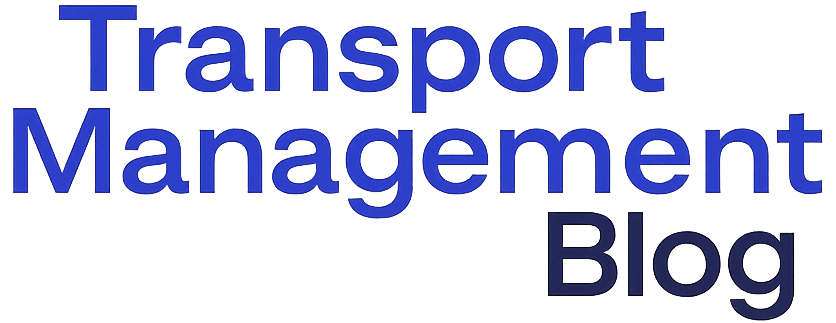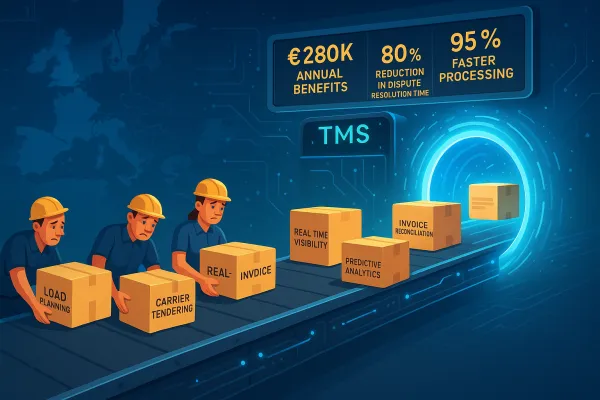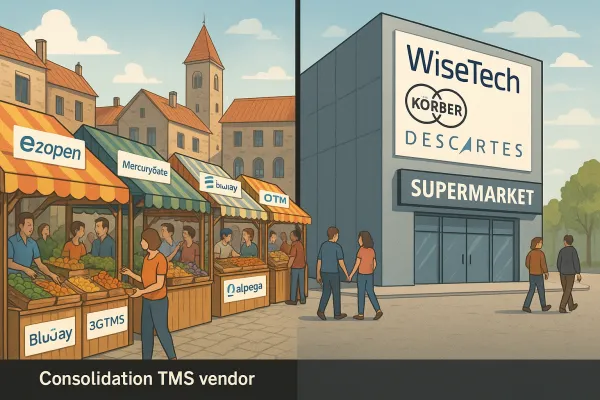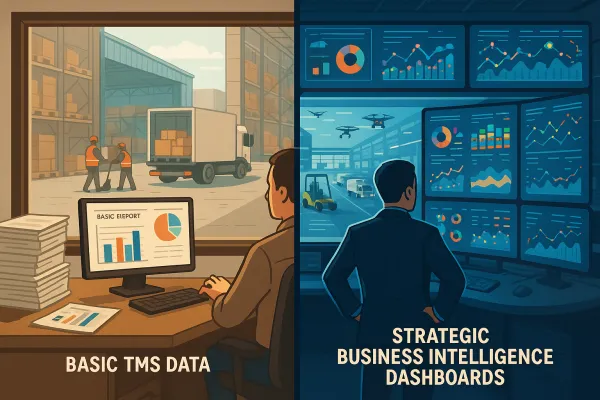The European Shipper's Strategic Window: How to Leverage 2025's Favorable Market Conditions for Transport Procurement Success

The market dynamics have shifted decisively in your favor. European road freight contract rates fell by 2.3 points quarter on quarter in Q1 2025, while spot rates declined more sharply by 3.8 points. New EU truck registrations also fell by 16%, with Germany and France experiencing double-digit reductions of 25.4% and 17.6% respectively. Meanwhile, the level of demand has led to a balance of power favorable to shippers, faced with carriers who are heading into the year with a high cost base.
For the first time in years, your transport procurement strategy can move beyond defensive cost containment to offensive value creation. This isn't just about negotiating lower rates. You have a strategic window to restructure your entire procurement approach and lock in competitive advantages that will persist long after market conditions change.
The Market Has Flipped: Why 2025 Is a Shipper's Market
The numbers tell a clear story. Contract rates in Q1 2025 fell to 131.1, marking the steepest quarterly decline since Q3 2023, with the 2.3-point fall from Q4 2024 highlighting persistent weak demand. Spot rates have also decreased sharply—down 3.8 points to 134.1—closing the gap with contract rates to just 3 points.
This convergence of spot and contract rates signals something profound. Carriers are struggling to maintain pricing power across both markets. Consumer demand remains subdued, costs have slowed their growth, and industry sentiment is dampened, leading to rate falls in both spot and contract markets.
The capacity squeeze that favored carriers for years has reversed. New capacity entering the market has been constrained, with registrations of HGVs falling by 16% between Q1 2025 and Q1 2024, and by 7% quarter-on-quarter. But here's the key difference from previous downturns: carriers entered 2025 with high fixed costs from wage increases and fuel hedging contracted during the tight capacity years.
As Thomas Larrieu, CEO of Upply, warns: "The current balance of power remains fairly favorable to shippers, but it is prudent to ensure long-term capacity based on balanced partnerships with carriers". This buyer's market won't last indefinitely, but smart shippers are already capitalizing on it.
Beyond Rate Reductions: The Four Pillars of Strategic Procurement
Rate negotiations are table stakes. The real opportunity lies in fundamentally restructuring how you approach transport procurement. Companies using sophisticated market intelligence have secured rate reductions of 15-30% on specific trade lanes during 2025's favorable conditions.
Contract Flexibility: Push for shorter commitment periods with volume flexibility clauses. Instead of locking into rigid annual contracts, negotiate quarterly reviews with market adjustment mechanisms. This protects you when demand spikes but ensures rate benefits when markets soften.
Performance Standards: Now's the time to raise service level requirements. Implement stricter KPIs for on-time delivery, damage rates, and communication standards. Carriers competing for reduced volumes will accept tighter performance metrics they'd reject in a capacity-constrained market.
Capacity Guarantees: Secure dedicated capacity commitments, especially for peak seasons. Frame these as partnership opportunities rather than demands. Carriers struggling with utilization rates will appreciate volume certainty, even at reduced margins.
Sustainability Metrics: Integrate emissions reporting and reduction targets into carrier scorecards. EU regulations are tightening, and forward-thinking shippers are using current leverage to future-proof their supply chains against compliance costs.
Timing Your Market Entry: When and How to Launch Strategic Tenders
Market timing matters more than most procurement teams realize. With expectations for stable rates through 2025 as cost growth has also slowed, you have a predictable window to optimize tender cycles.
Launch major RFPs during Q1 and Q3 when seasonal demand is lowest. Avoid Q4 peak season and the post-holiday Q1 lull when carriers are most desperate for volume. At the start of 2025, spending patterns followed usual seasonal trends, slowing down after their peak in Q4, which puts downward pressure on freight rates.
Structure tenders as partnership discussions rather than adversarial price wars. The current market allows you to be selective, but carriers with strong service records deserve fair treatment. You'll need these relationships when capacity tightens again.
Consider multi-year agreements with annual market adjustment clauses. This approach gives carriers volume certainty while protecting you from dramatic rate increases. Build in performance incentives that reward service improvements with volume increases.
Technology as Your Procurement Force Multiplier
Modern TMS platforms have evolved beyond basic freight management. MercuryGate is one of the top transportation management systems, allowing automation of the entire transportation life cycle through routes, rates, and end-to-end processes optimization, driving strategic decision making and enhancing freight transportation performance.
BlueYonder (formerly JDA) provides industry-leading supply chain software that tackles present-day market requirements, creating value through all transportation processes synchronization and delivering both best cost control and outstanding service. Meanwhile, Alpega Group offers end-to-end solutions including Transport Management Services (TMS) that connect companies to a broad network of logistics providers and digitize complex supply chain management.
For European mid-market companies, solutions like Cargoson offer sophisticated procurement capabilities without enterprise-level complexity. These platforms provide automated benchmarking against current market rates, real-time visibility into carrier performance, and scenario modeling for contract negotiations.
The key is real-time market intelligence. Platforms that integrate live rate data help you identify arbitrage opportunities between spot and contract markets. When spot rates like Warsaw–Duisburg experienced an 11.3-point drop while Madrid–Paris rose by 4.8 points, informed shippers shifted volume to capture the spreads.
Building Sustainable Partnerships in a Buyer's Market
Aggressive negotiation has its place, but relationship preservation matters more in the long term. With 426,000 unfilled truck driver positions across Europe according to IRU's 2024 survey, capacity constraints will return.
Treat your top-performing carriers as strategic partners, not just vendors. Share volume forecasts, collaborate on efficiency improvements, and provide payment terms that support their cash flow. These gestures cost little during favorable markets but build loyalty for tighter periods.
Implement tiered carrier strategies. Maintain core relationships with 3-5 primary carriers for baseline capacity, supplement with secondary carriers for flexibility, and use spot markets for overflow. This structure provides options without over-dependence on any single provider.
There is potential for increased demand for dedicated contracts, with a preference for long-term agreements rather than fluctuating spot rates in the medium to long term. Position yourself as the shipper offering stability in exchange for competitive rates and superior service.
Preparing for the Inevitable Market Shift
Current favorable conditions won't persist indefinitely. The driver shortage crisis persists, with 426,000 unfilled truck driver jobs in Europe. Economic recovery and renewed demand growth will eventually shift leverage back to carriers.
Build optionality into every agreement. Include termination clauses for underperformance, volume flex provisions for demand changes, and fuel adjustment mechanisms for cost volatility. These contractual elements provide escape routes when markets tighten.
Diversify your carrier base geographically. Geopolitical changes and global economic instability have renewed focus on strengthening local and regional economies, leading to initiatives such as "Buy European" which encourage the support of European goods and businesses. This trend supports regional carrier relationships.
Invest in technology that provides leading indicators of market shifts. Transportation intelligence platforms can alert you to capacity constraints before they impact rates, giving you time to adjust procurement strategies proactively.
Action Plan: Your 90-Day Market Advantage Strategy
Days 1-30: Market Assessment
- Analyze your current carrier portfolio for performance and rate competitiveness
- Benchmark existing rates against current market levels using TMS market intelligence
- Identify lanes where you're paying above-market rates
- Document service failures and cost overruns from the past 12 months
Days 31-60: Strategic RFP Launch
- Design partnership-focused RFPs emphasizing mutual value creation
- Include sustainability requirements and performance incentives
- Structure contracts with flexibility clauses and market adjustment mechanisms
- Engage 8-12 carriers per major lane to ensure competitive tension
Days 61-90: Contract Implementation
- Negotiate final terms leveraging current market leverage
- Implement performance tracking and regular review cadences
- Establish communication protocols and escalation procedures
- Begin quarterly market reviews to monitor changing conditions
Success metrics should include: rate savings of 8-15% on major lanes, service level improvements of 5-10%, and reduced administrative costs through automation and improved processes.
The transportation market's balance of power shifts cyclically, but strategic advantages built during favorable periods can persist for years. Companies that capitalize on 2025's shipper-friendly conditions through comprehensive procurement transformation will outperform competitors when capacity tightens again. The question isn't whether market conditions will change, but whether you'll be ready when they do.





